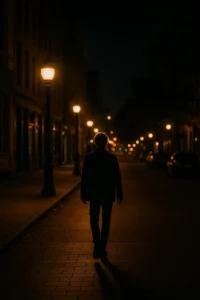Urban tourism can be a powerful way to experience culture, history, and local life. It brings economic opportunities to cities and offers travelers unique stories beyond the usual landmarks. But there’s a growing concern within this trend—the rise of irresponsible urban exploration. From trespassing in abandoned buildings to treating vulnerable communities as photo backdrops, some tourism practices cross ethical lines. What begins as curiosity can end in exploitation, damage, or disrespect. It’s time to examine the darker side of urban tourism and how we can do better.
The Rise of Urban Exploration
Urban exploration—often called “urbex”—has surged in popularity thanks to social media. Instagram and YouTube are filled with dramatic images of graffiti-filled factories, empty hospitals, and crumbling mansions. These visuals capture beauty in decay, sparking a fascination with forgotten spaces. But not all exploration is harmless. Many of these locations are private property, structurally unsafe, or protected for cultural reasons. When explorers enter without permission, they risk legal consequences and physical danger—and may unknowingly cause harm.
Damage to Historic and Abandoned Sites
Old buildings are often fragile. A single visitor stepping on unstable flooring or removing an object can accelerate a site’s decay. Worse still, some explorers vandalize walls or leave behind trash in their quest for the perfect shot. What was once a hidden gem can quickly become overrun by tourists and influencers, especially if its location is shared online. This phenomenon, known as “ruin porn,” turns cultural heritage into consumable content, often without any regard for preservation.
Exploitation of Low-Income Communities
In some cases, tourists treat poor or marginalized neighborhoods as exotic photo ops. Favela tours, slum walks, and “urban poverty” photography can cross into unethical territory when done without community involvement or respect. Residents may feel objectified or invaded, especially when their homes are used as dramatic backdrops for travel influencers. These tours can reinforce stereotypes rather than foster understanding. Without thoughtful context, urban tourism risks turning real human struggle into spectacle.
Safety Risks for Tourists and Locals
Irresponsible urban tourism doesn’t just harm places—it can put people in danger. Entering abandoned sites may expose explorers to falling debris, toxic materials, or confrontations with security or police. In some cases, tourists venture into high-crime areas without proper guidance, creating risks for themselves and strain for locals who must deal with outsiders in sensitive spaces. Rescue efforts or emergencies in such areas also place pressure on already limited local resources.
Disrespect Toward Local Culture
Sometimes, what tourists find “cool” or “raw” is deeply personal or sacred to locals. Graffiti, street memorials, or protest art may have powerful meanings that aren’t understood by outsiders snapping photos without asking questions. Monuments of resistance or mourning shouldn’t be reduced to backdrops for casual selfies. Respect for context and culture is crucial—without it, exploration becomes exploitation.
Digital Overexposure and Gentrification
When hidden urban gems go viral, they often attract an influx of tourists, which can speed up gentrification. Once-quiet neighborhoods suddenly see rent hikes, local businesses replaced by trendy cafés, and original residents pushed out. Digital exposure, while good for visibility, can unintentionally erase the very culture that made a place special in the first place.
A Call for Responsible Exploration
Urban tourism doesn’t have to be harmful. When done respectfully, it can empower communities, preserve stories, and inspire travelers. Here’s how to explore responsibly:
- Seek permission before entering abandoned or private properties.
- Support local businesses instead of big international chains.
- Learn the history of the places you visit, especially if they carry trauma or cultural significance.
- Avoid geotagging sensitive locations to protect them from overexposure.
- Engage with communities through guides or residents who can offer authentic insight.
- Leave no trace—take only pictures, and leave only respect behind.
Conclusion: Choose Curiosity with Conscience
Urban tourism offers a chance to connect with the heartbeat of a city—but it must be approached with awareness and humility. Irresponsible exploration can damage communities, erode culture, and reduce meaningful places to hollow spectacles. As travelers, content creators, or explorers, we hold the power to uplift or to harm. Let’s choose to explore not just with our eyes, but with respect in our steps and conscience in our lens.







